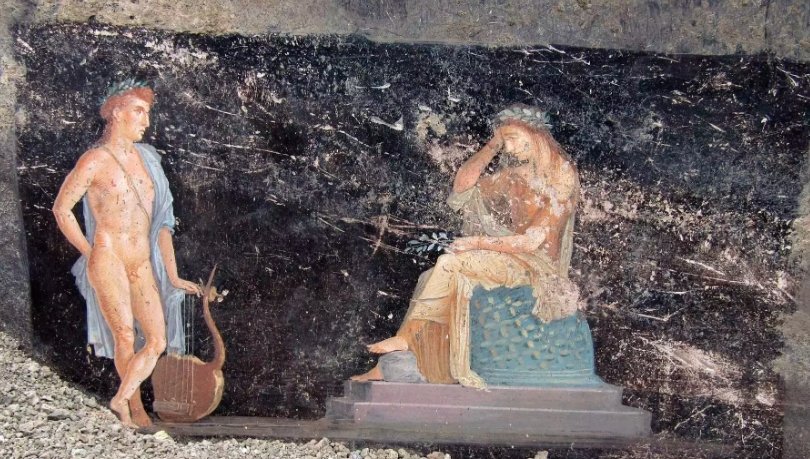In the shadow of Mount Vesuvius, a recent discovery within the ancient ruins of Pompeii has brought to light a banquet room adorned with frescoes that narrate tales from a time long past. This remarkable find offers a window into the opulent lifestyle and artistic expression of Roman elites during convivial moments of feasting and discussion.
The Discovery of the Banquet Room
The excavation in Pompeii’s Regio IX area unveiled a room of considerable size, approximately 50 feet in length and 20 feet in width. The walls of this grand hall are enveloped in darkness, a choice likely made to conceal the soot from burning oil lamps. Yet, it is this very darkness that sets the stage for the vibrant frescoes that have survived the test of time.
The frescoes depict a pantheon of mythological figures, each playing a role in the legendary Trojan War. Among them, the visages of Helen of Troy and Paris stand out, their affair having sparked the flames of war. These images are accompanied by Greek inscriptions, including the name “Alexandros,” another name for Paris, further solidifying their identities.

The Frescoes: A Portal to the Past
The banquet room’s frescoes are a testament to the Third Style of Roman wall painting, dating back to the first half of the 1st century A.D. This style is characterized by its elegance and detail, with a focus on mythological subjects set against monochromatic backgrounds. The choice of the Trojan War as a theme reflects the Romans’ fascination with their Greek heritage and the epic tales that shaped their understanding of the world and fate.
The frescoes serve not only as decoration but also as conversation starters, sparking dialogue among guests about the nature of love, destiny, and the capriciousness of the gods. The tragic figure of Cassandra, cursed with foresight yet doomed to be disbelieved, and the god Apollo, who could not secure victory for the Trojans despite his divine intervention, are poignant reminders of the complex relationship between mortals and the divine.
The Significance of the Find
This discovery is more than just an archaeological triumph; it is a cultural revelation that provides insight into the social and artistic practices of ancient Rome. The banquet room, with its elaborate frescoes, was a place where the elite could indulge in luxury and intellectual discourse. It is a reminder of the rich cultural tapestry that has been woven through history, connecting us to our past in ways that continue to surprise and enlighten.














